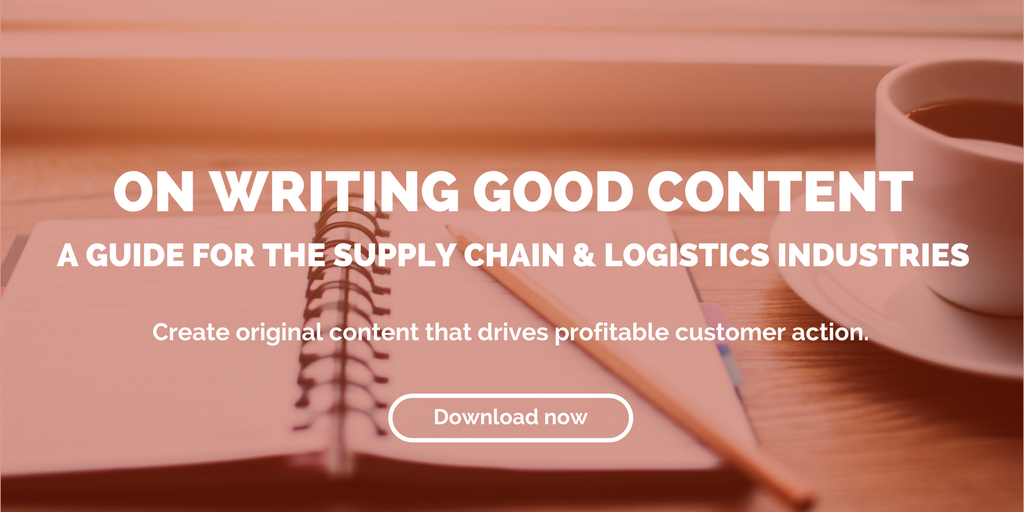
by Fronetics | Mar 20, 2018 | Blog, Content Marketing, Logistics, Marketing, Strategy, Supply Chain
Email workflows will automatically deliver content to leads at designated intervals, inviting them to take action and helping them to move down the sales funnel.
We’ve written before about marketing automation, and what it can do for the supply chain in term of cost- and time-savings. It’s time to get specific about how you can put marketing automation technology to work for you.
There are quite a few highly effective automation tools (including chatbots). Today we’re going to talk about email workflows.
What are email workflows?
These resource-saving tools consist of a series of emails that automatically send to a user at designated intervals. Based on actions a user has taken on your website, they receive emails relating to their interests — or where they are in the sales process — automatically.
Take this example: If someone downloads a resource from your website, an automated email workflow can be triggered to send a thank-you email within 24 hours. After the initial email comes a series of lead-nurturing emails over the next few weeks, continuing to educate the lead about a subject they are interested in, based on the resource they downloaded.
Why use email workflows
HubSpot reports that businesses using this kind of marketing automation to nurture leads receive a 451% increase in qualified leads. Email workflows work, period.
At Fronetics, we recommend clients create email workflows all the time. It allows them to deliver relevant, timely content to leads through automation. That means a sales person doesn’t have to keep track of when a download occurred and remember to send follow-up emails with lead-nurturing content.
Email workflows let you trigger emails based on any information you have about your leads, so you can send the ideal message at the ideal time. Here are some ideas of email workflows you can try:
- Topic workflows, triggered by page views or content offer downloads
- Lead-nurturing workflow, triggered by top-of-the-funnel conversions
- Re-engagment workflow, triggered when a contact has been inactive for a while
- Upsell workflow, triggered by past purchases
- Blog subscriber welcome workflow, triggered when someone subscribes to your blog
By taking the time to create thoughtful email workflows on the front end, you will save your team a lot of time and effort during the sales process. It’s this kind of marketing automation that will streamline your sales and marketing efforts, freeing you up to complete other important tasks.
Related posts:


by Fronetics | Mar 15, 2018 | Blog, Content Marketing, Logistics, Marketing, Strategy, Supply Chain
Here are four simple steps to help you measure your company’s content marketing ROI and the success of your strategy.
Lean-startup pioneer Eric Ries said, “The only metrics that entrepreneurs should invest energy in collecting are those that help them make decisions.” In other words, measure the things that will tell you if an effort was profitable so you know where to put your time and money.
But most companies aren’t using the right metrics to track their content marketing ROI. For example, 83% of B2B enterprise companies (over 1,000 employees) use web traffic as their main metric for measuring content marketing ROI. A spike in homepage hits could be the result of your hard work, but it could also be ghost spam, or even both! So clearly, web traffic isn’t the most reliable metric.
Content marketing ROI is harder to quantify than checking a few quick numbers. But don’t give up hope. In the article How to Measure Content Marketing ROI: A Simple 4 Step Process, marketing consultant Bill Widmer breaks down a simple, four-step process that will quickly and effectively measure your content marketing ROI.
What is content marketing ROI?
Content marketing ROI is how much revenue you gain from content marketing in comparison with what you spend on creating and distributing content. It’s an actual percentage that shows how much revenue you gained vs. how much money you spent. And for a lot of businesses (and bosses), this percentage is very important. They want you to be able to prove that the marketing dollars that are going into your content marketing strategy are actually pulling in new business.
Every company has specific key performance indicators (KPIs) that help shape their marketing strategies. Here at Fronetics, we believe that your content marketing strategy should take these KPIs into consideration when thinking about your ROI:
- Website traffic
- Leads generated
- Conversion rate
- Direct sales
Obviously content marketing has more benefits than these four KPIs demonstrate — including better customer retention, brand awareness, and improved SEO — but to begin to measure your ROI, let’s focus on these four main points.
Measure content marketing ROI in 4 simple steps
1. Download your reverse goal path data.
Andy Crestodina, co-founder and CMO of Orbit Media, suggests:
- Go to your analytics dashboard. Set the date range for at least a year.
- Go to Conversions > Goals > Reverse Goal Path.
- Add a filter like “/blog” so only blog posts show up.
- Sort by Goal Completions.
After this step, you’ll be able see which of your posts have driven the most conversions. But you can’t stop there. These are simply conversion numbers. We want those numbers to become conversion rates, so let’s keep going.
2. Download your pageview data.
In order to calculate a conversion rate, you need to know pageviews. Here’s how to get that information:
- Go to Content > Site Content > All Pages.
- Filter with “/blog” to get only blog posts.
Download this data into the spreadsheet from step one.
3. Get your conversion rate.
Now here’s a little math for you. Divide the data in the “conversions” column by the number in the “unique pageviews” column. This will give you your conversion rate per blog post.
This will show you what your best-performing pieces of content are, and what posts need to be updated to gain more views and shares.
This information will give you valuable insight into the topics that your target audience are reading about and how you can better plan for high-ranking content in the future.
If you have posts or pages that are older — like over a year — and they haven’t gotten any views or conversions, it’s time to think about reworking them to have more appeal to your target audience.
For your actual percentage, you’ll need to calculate how many of these leads have converted to sales.
4. Calculate content marketing ROI based on lead conversions.
Here’s where things get a little more complicated, but still very manageable. You need to start putting tags on your leads according to the content they came from.
You can use programs like WordPress or Blogger to help you automatically tag any leads that came from a specific form. Assuming the form correlates to a single blog post, you will know that any leads with that tag came from that post.
You can also connect your leads with a CRM, such as HubSpot or SalesForce, and track which leads came from specific emails. These programs easily integrate with your analytics and email marketing platforms for up-to-date numbers and data.
Related posts:
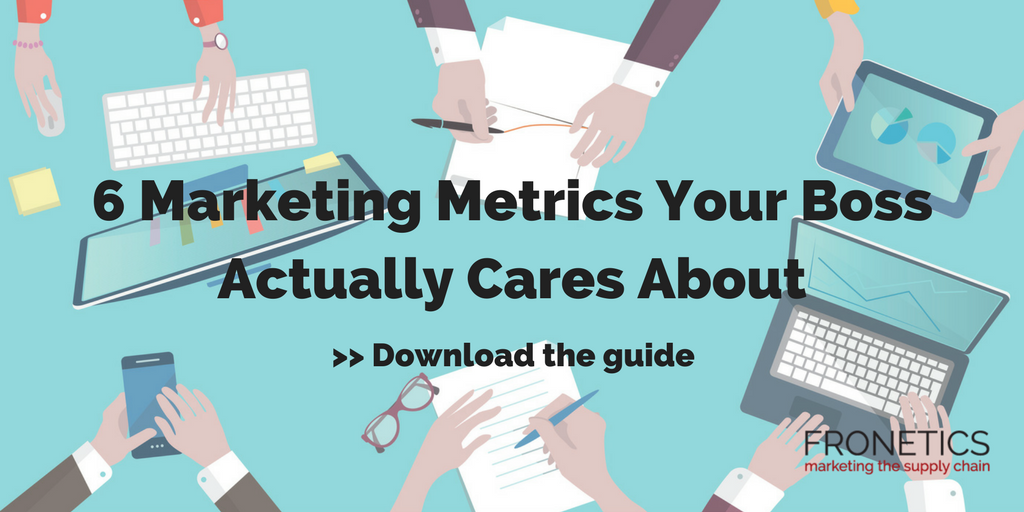

by Fronetics | Mar 14, 2018 | Blog, Content Marketing, Logistics, Marketing, Supply Chain, Talent
Logistics and supply chain careers are increasingly high paying, diverse, and in demand.
With the talent gap growing wider every day, ambitious current and future supply chain professionals have many interesting opportunities. And not only that — Logistics and supply chain careers are increasingly high paying, according to LinkedIn’s State of Salary Report 2017.
According to Rob Byrne of Logistics Bureau, “Through its extensive span of activities, the supply chain sector offers wide-ranging possibilities for employment and career progression. The variety of functions involved — product design, procurement, warehousing, production, transport, distribution, sales, for instance — encourage demand for new employees.”
Here’s a look at five of the top logistics and supply chain careers available to today’s professionals.
Top 5 logistics and supply chain careers
1) Customer Satisfaction Director
Automation and analytics are taking over in fulfillment centers, and the options for building a load, planning a route, and confirming shipments are extending. Forbes contributor Kevin O’Marah writes, “Customer contact at the point of delivery may be your best chance to make a great impression and renew the business.”
The industry once thought of the customer satisfaction director as a “logistics manager.” But as technology revolutionizes the sector, this role has — and will continue to — evolve.
2) Distribution Center Supervisor
These are professionals who administer all the daily activities of a distribution center. They manage expenses, minimize losses, and are responsible for ensuring that goods are sent to buyers at the right time. This role requires juggling complicated tasks to keep processes running smoothly.
3) Procurement Manager
Procurement managers are responsible for finding the most competitive prices to buy goods for their company. If you have excellent communication and negotiation skills, love working with numbers, and are adept at establishing professional networks, this could be a great career option for you.
4) Demand Planning Analyst
As a demand planning analyst, you would be responsible for analyzing your company’s inventory and billing processes, managing stock levels, and purchasing goods. If you’re someone who enjoys quantitative analysis, this is a fulfilling option.
5) Supply Chain Consultant
Supply chain consultants provide a third-party perspective to companies regarding vendor and inventory management, or any aspects of their supply chain and logistics activities. This is a great option for seasoned supply chain professionals looking for a career shift, as experience is a plus when it comes to consulting.
These logistics and supply chain careers represent just five of the many exciting options available to professionals these days. What career paths do you find most exciting/fulfilling/promising?
Related posts:


by Fronetics | Mar 13, 2018 | Blog, Content Marketing, Leadership, Logistics, Marketing, Supply Chain
Here are five books for supply chain leaders to stay on top of industry trends and management practices.
“Leadership is the capacity to translate vision into reality.” — Warren Bennis
All executives and managers bring different skills to the table. They have different experiences and approaches that set them apart. So what makes an executive a great leader? Great leaders embody the ability to inspire and empower their teams to succeed.
But great leaders don’t stay great, unless they continue to adapt to new environments, approaches and, ultimately, challenges. One of the best ways to sharpen your leadership skills is by learning from other leaders’ experiences. Leadership books, especially those focused on the supply chain and logistics industries, give valuable insight into the trials and triumphs of your industry peers’ encounters.
Here are five books that we recommend reading to keep getting the job done: empowering your team, learning about industry trends, updating your management practices, and other key insights.
5 must-read books for supply chain leaders
1. The Supply Chain Revolution: Innovative Sourcing and Logistics for a Fiercely Competitive World
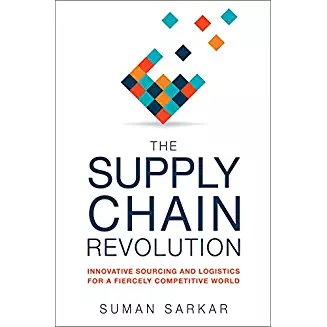
The smartest leaders see supply chain and sourcing for what they can be: hidden tools for outperforming the competition. Steve Jobs, upon returning to Apple in 1997, focused on transforming the supply chain. He hired Tim Cook, and the company sped up the development of new products, getting them into consumers’ hands faster. The rest is history.
Across a range of industries, once-leading companies are in trouble. While competitors were shuttering stores, Zara’s highly responsive supply chain made it the most valued company in the retail space and its founder, the richest man in Europe. The success of TJX, Amazon, Starbucks, and Airbus is fueled by supply chain and sourcing. Showcasing real solutions, The Supply Chain Revolution aims to educate leaders to improve customer satisfaction and increase revenue.
2. The Forklifts Have Nothing To Do! Lessons in Supply Chain Leadership
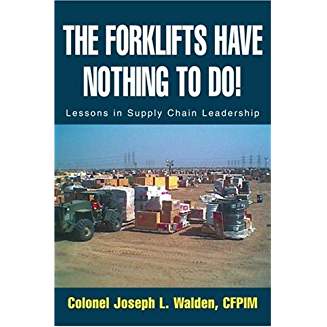
The Forklifts Have Nothing To Do! by Colonel Joe Walden provides practical methods for improving supply chain operations. Walden has spent more than 25 years leading supply chain operations and believes that improving your supply chain will improve your bottom line, regardless of your industry.
His recommendations draw on examples in civilian industry and military operations, including his recent experiences in Operation Iraqi Freedom. Supply chain operations in the military are very similar to supply chain operations in commercial industry. Both have the ability to improve operations for the customer.
3. Managing Supply Chain Operations
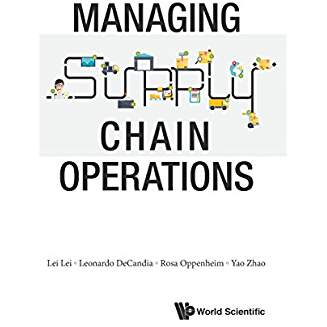
Managing Supply Chain Operations by Lei Lei, Leonardo DeCandia, Rosa Oppenheim, and Yao Zhao shows leaders the key drivers of supply chain performance. These include demand forecasting, sales and operations planning, inventory control, capacity analysis, transportation models, supply chain integration, and project management and risk analysis.
The book is enhanced by real-life examples and case studies, as well as strategies from best practices and a focus on social and economic impact. The content reaches beyond traditional operations management and draws on the extensive experience of the authors conducting industry projects through the Rutgers Center for Supply Chain Management. The input of senior business executives has been an invaluable asset in presenting a balanced knowledge of both quantitative models and qualitative insights.
4. Avoiding a Supply Chain Apocalypse: The Best of Dr. Tom’s Advice
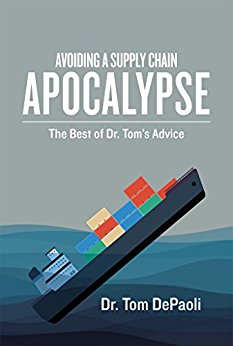
In his creative guide Avoiding a Supply Chain Apocalypse, Dr. Tom DePaoli offers practical strategies and tactics, learned and tested from his purchasing and supply chain career.
DePaoli recommends a multi-faceted, diverse approach to avoiding supply chain meltdowns. He challenges readers to survey his best writings and to select what fits their particular organizational cultures. There is no one-size-fits all in the supply chain. As the importance of supply chain management grows leaps and bounds, the supply chain professional must develop multiple options and proficient tactics to ensure the continuity of the supply chain.
5. Supply Chain Metrics that Matter
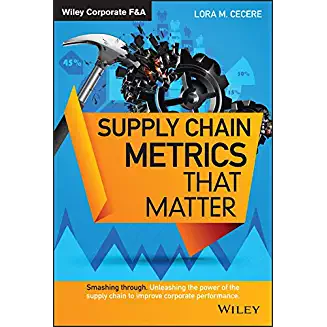
One cannot snap their fingers and deliver supply chain success. It happens over the course of many years and is measured in inches not miles.
In this book, Lora M. Cecere evaluates the progress of over a hundred companies over the period of 2006-2013. The effective supply chain makes a difference in winning a war, saving a patient, and driving commerce. But it also makes a difference in a community having clean air, potable water, and a higher standard of living. Mistakes are hard to overcome. Supply Chain Metrics that Matter tells this story. The book links corporate financials to supply chain maturity, and what metrics matter most.
What books for supply chain leaders do you recommend?
Related posts:


by Fronetics | Mar 12, 2018 | Blog, Content Marketing, Logistics, Marketing, Social Media, Supply Chain
Here’s how to quantify the impact of content marketing on brand awareness, a notoriously difficult benefit to measure.
A successful content marketing strategy strengthens the relationship between brands and their target audiences. And brand awareness is a key component to any successful content marketing strategy. Ultimately, the more aware audiences are of your brand, the more likely they are to buy your products or services.
To properly measure the impact of your content marketing, you must start at the beginning, with the overall goals for your content marketing strategy. What kind of content are you creating? Why are you creating this content? How will this increase sales or grow your business?
A lot of our customers include increasing brand awareness among their content strategy goals. But this is a very difficult objective to quantify. How can you measure how familiar people are with your brand?
Here are four metrics we recommend for tracking the impact of content marketing on brand awareness.
4 metrics to measure the impact of content marketing on brand awareness.
1. Social media reach
Tracking the reach of your social media content is a good gauge of the impact it’s having on your brand awareness. Companies can waste a lot of time trying to track down information on various social media accounts; don’t fall into this trap.
Use tools, like Shared Count, that show how many times a piece of content has been shared on social media. Shared Count accurately tracks the social reach of your content on the most popular social media sites — including Facebook, Twitter and LinkedIn — to easily keep track of your social reach. In turn, you can discover the impact your social reach is having on your brand awareness.
2. Brand mentions
Not to state the obvious, but if people are talking about your brand online, it’s safe to assume they are aware of you. There’s a great deal of value in knowing what customers are saying about your company and your products/services. Monitoring brand mentions online can provide honest feedback and objective insight from current and potential customers.
There are several tools to help you track brand mentions online. Here at Fronetics, we prefer the ease of Google Alerts, which allows you to set up custom alerts when your brand is mentioned online. We also use Hootsuite, where you can track brand mentions, as well as keywords and phrases, across all of your social media platforms.
3. Media mentions
Media mentions differ from brand mentions in their origin. Media mentions come directly from publishers, instead of customers. These mentions include any media coverage — TV, print, social media, interviews — that include your brand. Remember, if publishers are talking about your brand online as a result of the content you’re creating, it’s impacting your brand awareness.
And let’s not forget about linkless mentions. As Google and other search engines continue to update their algorithms, it’s crucial to update your monitoring practices. Linkless backlinks are becoming increasingly popular and can have a huge impact on your brand awareness (and SEO!).
4. Branded searches
Knowing how many people are searching for your specific brand tells you a lot about how well known your brand is. Using online tools, such as Google Adwords or Moz, you can track the searches for your products, blogs, social media platforms, and any other variation that you find useful. These tools are free, easy to use, and perfect for determining if your company is popping up when customers are searching.
Using these tools to measure brand awareness offers clues that customers are finding your company in their search efforts. If the needle is not moving in a positive direction, always adjust your strategy to until you find what works for your business.
Drawing the public’s attention to — and heightening their knowledge of — your business ultimately generates leads. And some of those leads will turn into sales. But, let’s be honest: this doesn’t happen overnight. And it’s often difficult to quantify.
That’s not a reason to throw in the towel. There are ways to measure the work that you’re putting into your content marketing program. Using these metrics, you can start tracking the impact of content marketing on brand awareness.
Related posts:


by Fronetics | Mar 8, 2018 | Blog, Content Marketing, Logistics, Marketing, Strategy, Supply Chain
Use these 4 steps to determine the topic clusters that will be best for driving organic traffic to your business’ website.
You’ve determined your pillar content and written your pillar pages. Now what? It’s time to develop topics clusters.
Topic clusters show search engines that your website contains breadth and depth on a particular subject, which will help them decide to show your page over others in a user’s search for that subject.
Determining what topic clusters to use can be overwhelming — as can figuring out how to optimize blog posts that contain cluster content. Let’s take a step back and think a little about what a topic cluster is.
HubSpot Academy has a great succinct summary: “Topic clusters are comprised of a pillar page and subtopic content that you’ve compiled for each of your core topics.”
So how do you go about developing topic clusters? We’ve put together a four-step guide to get you started.
4 steps to developing topic clusters
1) Choose your topic.
This is all about determining where you can or strive to be a thought leader. Pick topics that are fundamental to your business, places where you can be a resource for potential buyers and industry peers. Define these topics with a name that summarizes the content it will address.
Chances are, you’ll have some supporting content already. Conducting a content audit will help you determine how much you have in place already.
2) Compile subtopics.
HubSpot recommends having “6-8 subtopics that address specific questions your customers may be exploring related to the core topic of your pillar page.” Other sources recommend between 10-20 subtopics. It depends on how broad your main topic is. (But if you can come up with more than 20 subtopics, your topic is definitely too broad!)
Conduct a brainstorming session with your team to think about relevant content that your target buyers would seek out when researching products and solutions.
Simple Marketing Now blogger Christine B. Whittemore suggests starting with identifying the problems your buyer persona faces. “Map out 5-10 core problems that your core persona has. Use research… to truly understand your buyer persona problems, including the world used to describe them.”
3) Develop pillar pages.
Now that you have a list of topics and subtopics, you need to develop your pillar pages. These pages will extensively — and broadly — cover each main topic, and they will include links to each subtopic.
Inbound Marketing Specialist Sarah Seward suggests using “relevant pictures, high-quality and interesting content, compelling headers, and any additional, related resources, such as a custom graphic visually demonstrating your expertise on a topic.”
4) Create!
Now it’s time to create your content (or brush up existing content you discovered in your audit). Be sure to link pages covering your subtopics to your pillar pages, using the correct anchor text. That means hyperlinking words that are relevant to the topic and subtopics.
Additionally, you can link subtopics together where appropriate. The more often you can create relevant links, the better.
Now repeat this process until you’ve created several topic clusters that best define your business. This SEO strategy will help ensure that prospective customers that are searching for products or services like yours will be more likely to visit your website and patronize your business.
Related posts:
